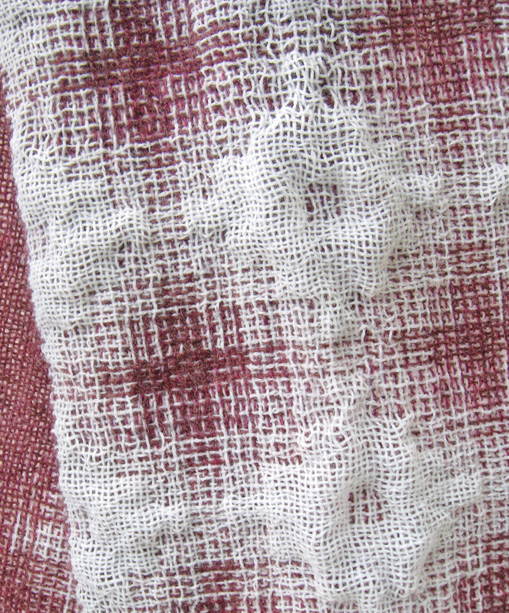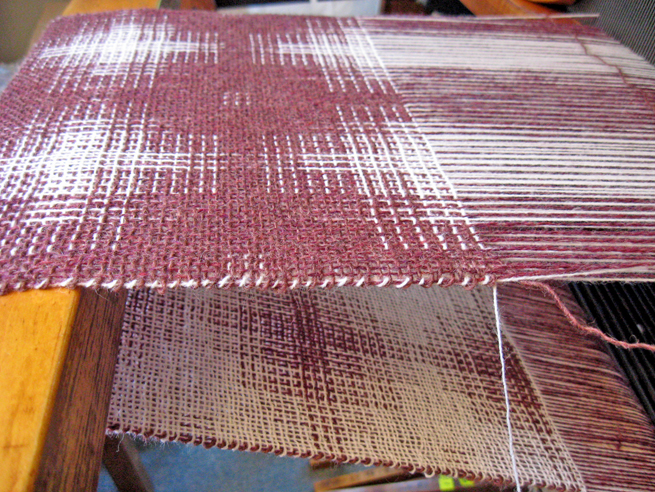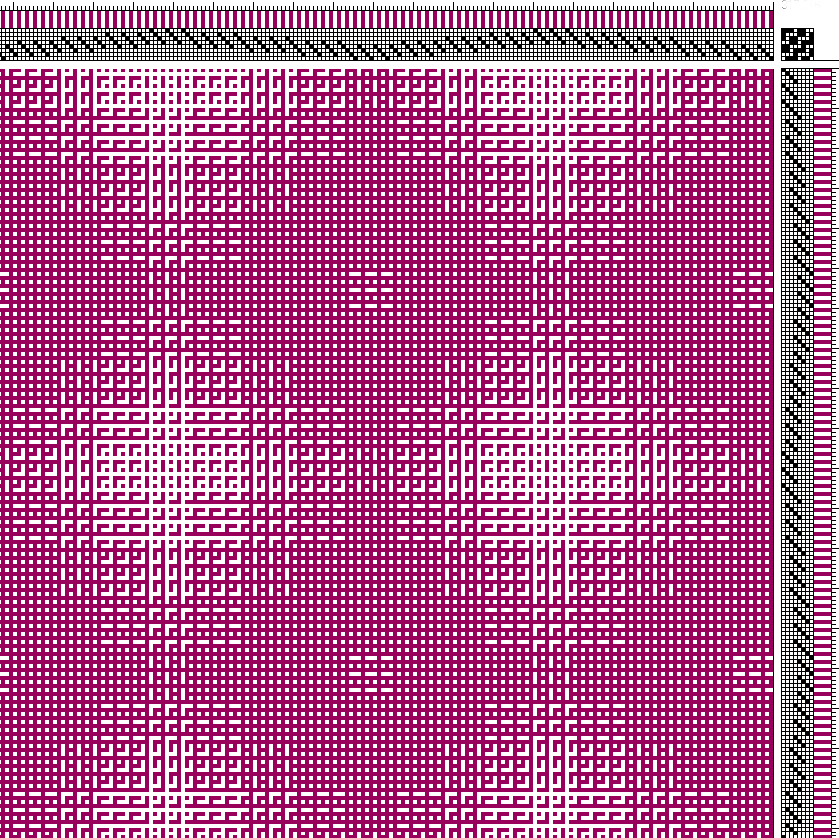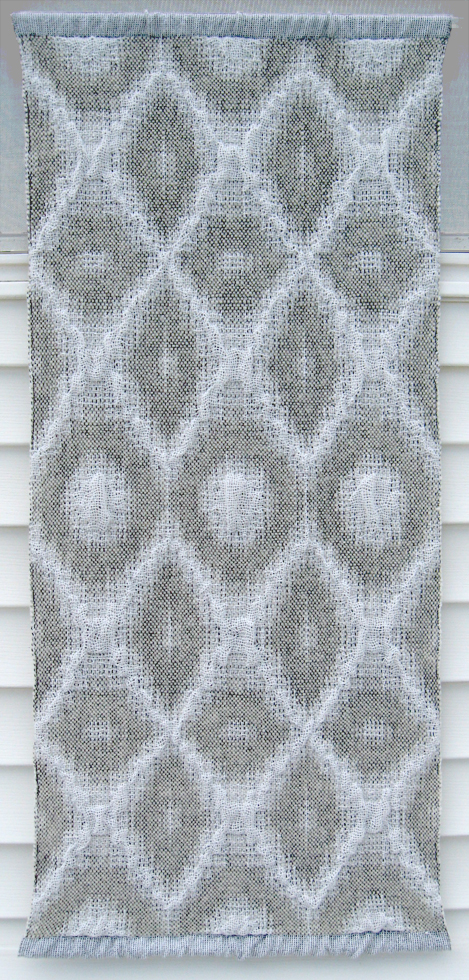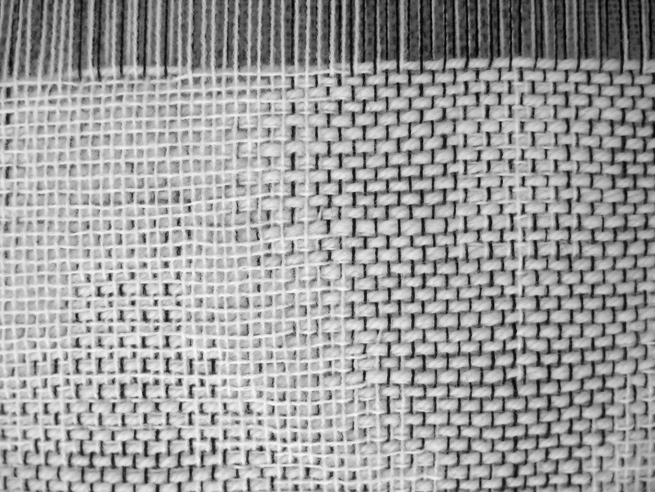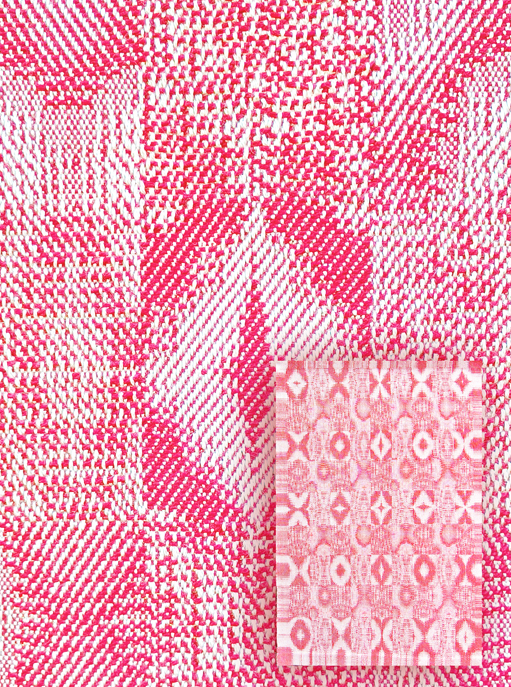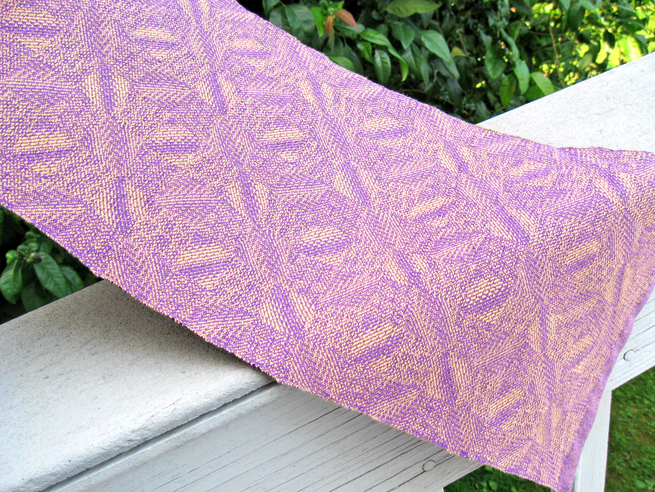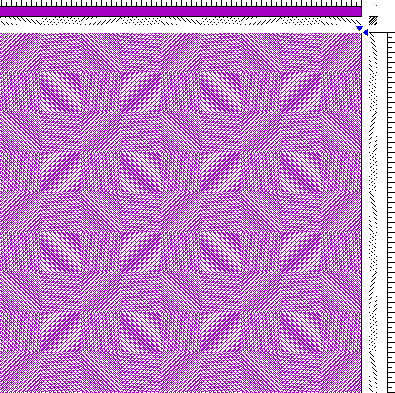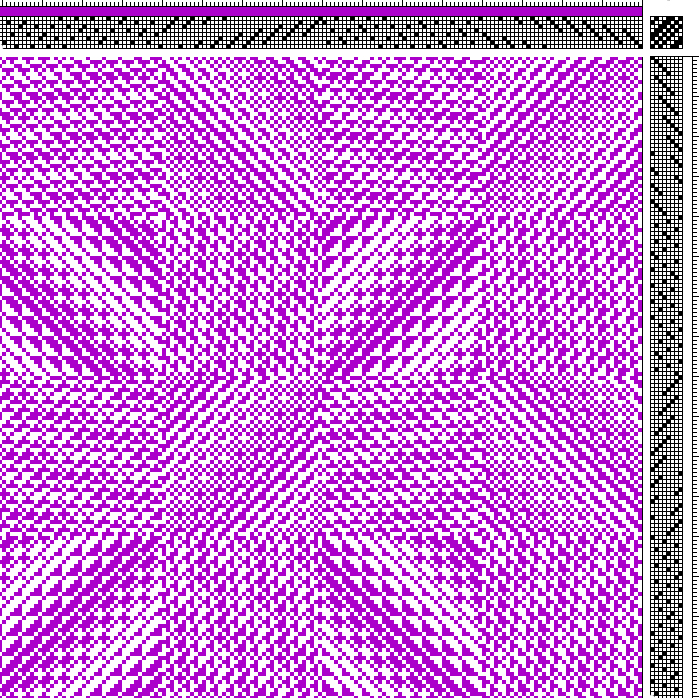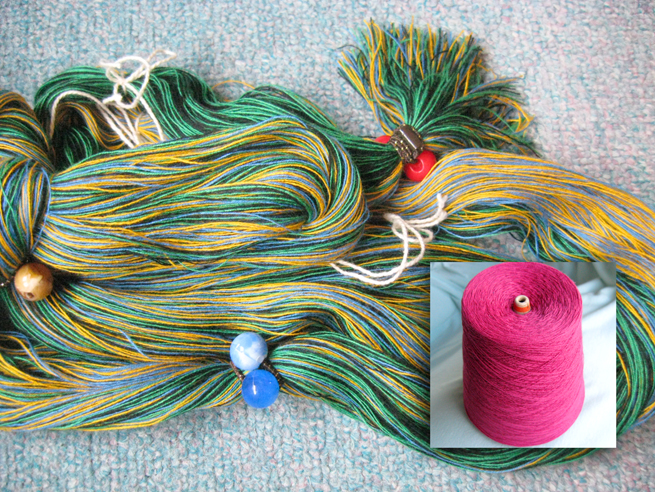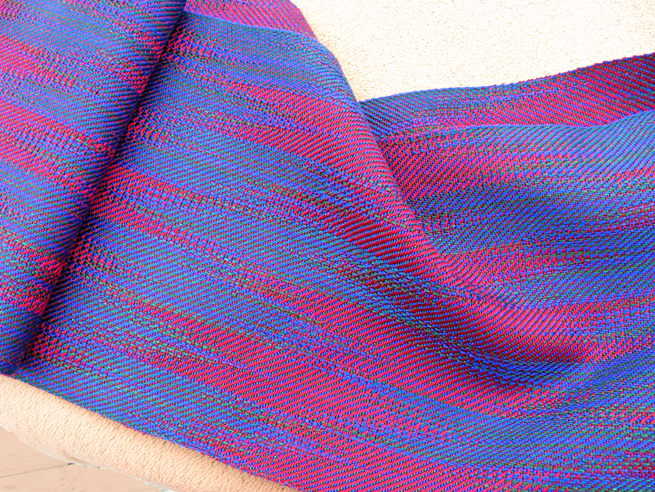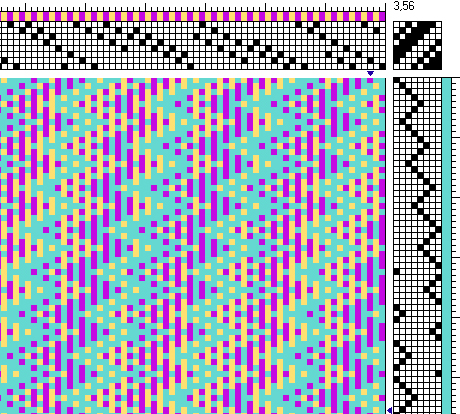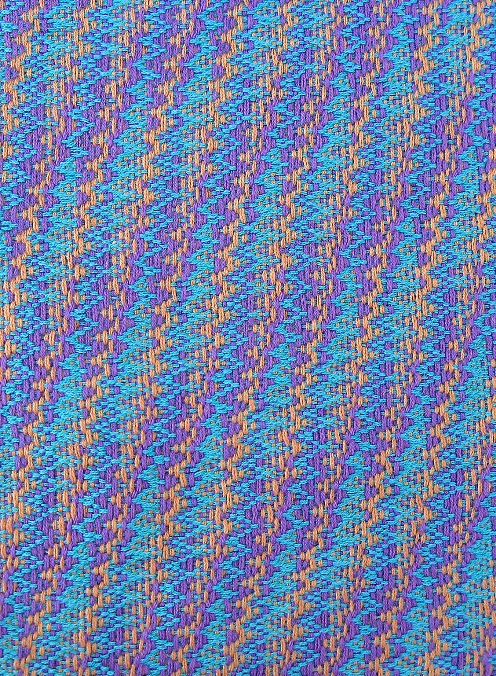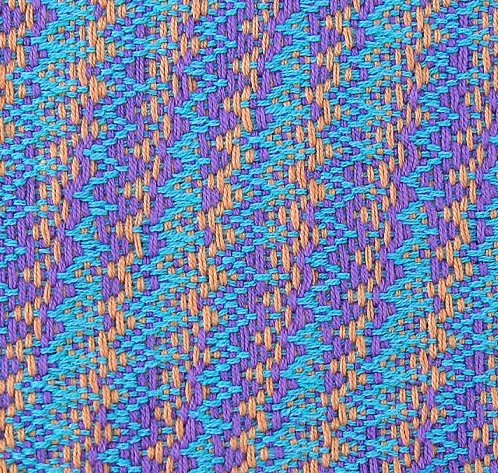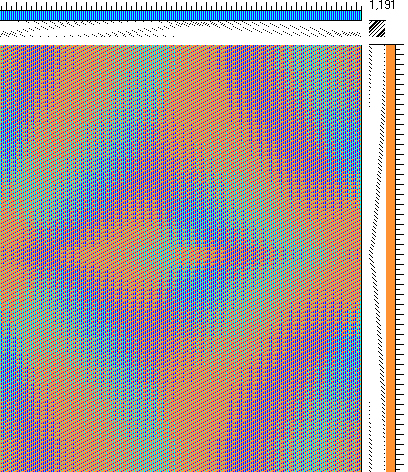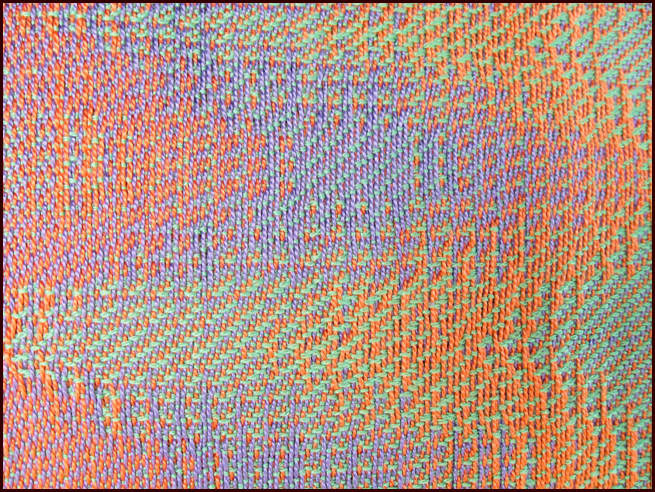I was surprised with a nice 3-D fabric when I wove with one yarn that shrinks more than another yarn after wet finishing. I think this is referred to as differential shrinkage in weaving. I also learned that the kind of fabric you end up with depends not only on the yarns and the finishing that you use but also on the weave structure and sett. I studied an enlightening article about this subject, “The Dimensional Scarf,” by Pauline Verbeek-Cowart in Weaver’s Magazine (issue #44, Summer 1999) that was very helpful. After weaving many samples in double weave, I chose to design and weave a scarf and a wall hanging in networked double weave using wool and acrylic yarns. Following are images and notes about these interesting projects.
To weave the 8-shaft Scarf I used 20/2 white acrylic yarn (does not shrink when wet finished) and a cranberry colored woolen yarn (shrinks when wet finished) about the same size for both warp and weft that I had in my stash. The sett is 16 e.p.i. and about 18 p.p.i. I used a very light beat as is apparent in the close-up image of the weaving in progress on the loom. I wet finished the piece by washing it vigorously by hand for the wool yarns to shrink and felt, being careful not to overdo it, and then laid flat to dry. In the past I used my washing machine to felt woolen pieces and at times they felted so much that an adult size sweater became a child’s size. I then ventured to design and weave a wall hanging, here it is:
To weave the Wall Hanging I used the same 20/2 white acrylic yarn and a 20/2 black woolen yarn for the warp and the same white acrylic yarn and a thicker white worsted wool for the weft. The wet finishing was a little different than for the Scarf: I washed it also by hand but then put it in the dryer for about 8 minutes, checked it and put it back for another 8 minutes until it was still a little bit damp and then laid it flat to finish drying.
Wishing you Happy Holidays and…
To Home Page
Update December, 2023: After publishing this post, I read Denise Kovnat‘s informative and beautifully illustrated book, Weaving Outside the Box – 12 Projects for Creating Dimensional Cloth. I’m inspired to further explore this interesting topic, thank you Denise!

